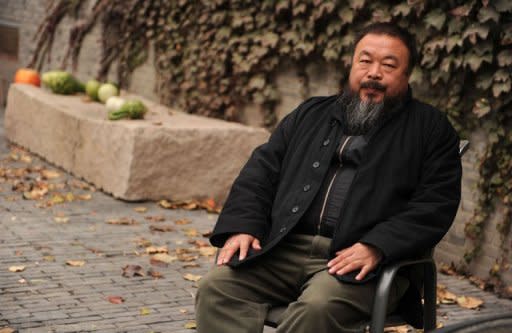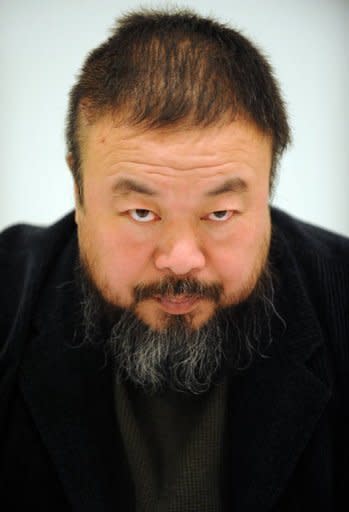US museums walk tightrope after China arrest
US museums are facing delicate choices as they strive to meet a growing interest in China, cooperating with counterparts across the Pacific despite alarm over the detention of top artist Ai Weiwei. Directors of museums across the United States said in interviews that they found a strong public appetite for work from China, with Americans eager to see everything from ancient treasures to modern art from the rising Asian power. But the US art world has also led calls to free Ai. One of China's most provocative artists, Ai had been begrudgingly tolerated but was seized in April and accused of tax evasion as Beijing mounts a sweeping crackdown on dissent. The Milwaukee Art Museum on June 11 opens a major exhibition of Chinese art that features more than 90 objects -- many long hidden from public view -- made for the 18th-century Qianlong emperor and kept inside the Forbidden City. The exhibition is a collaboration with China's Palace Museum, which worked with the Peabody Essex Museum in Massachusetts on the three-stop tour that also stopped at New York's Metropolitan Museum of Art. Dan Keegan, director of the Milwaukee Art Museum, said his institution's "Summer of China" was aimed at the general public and would include discussions touching on many aspects of Chinese art and culture -- including Ai's case. Keegan said he considered the museum to be a "forum for public understanding rather than a platform for academic protest." "The museum's role is to build bridges, not walls. In this country, conversation is better than self-censorship," he said. A very different dilemma is facing the Museum of Contemporary Art San Diego, which recently decided to acquire work by Ai -- two chairs crafted from solid marble -- that it now has on temporary license. Director Hugh Davies said the museum was recently told by the shipping intermediary that the chairs -- which are on display and popular among visitors -- needed to be returned to China. "It might just be a bureaucratic snafu, but I would guess it probably isn't," Davies said. "It's our intention to keep these chairs and we will fight vigorously with that goal in mind. But we also don't want to do anything that would deepen Ai Weiwei's problems or lengthen his incarceration, so we have to tread very carefully," he said. Davies said the chairs showed "exquisite craftsmanship" and hailed Ai as a historic figure in art. "This is the equivalent of Andy Warhol or Jasper Johns being arrested without charges and then being accused of tax evasion or something like that," Davies said. Ai's best-known works include "Sunflower Seeds," an exhibition at London's Tate Modern of millions of seemingly identical but in fact unique mini-sculptures. In Munich, Ai arranged thousands of backpacks in a poignant reminder of the children killed in the 2008 Sichuan earthquake due to what many parents said was shoddy construction. British novelist Hari Kunzru, writing Saturday in The Guardian, called Ai's detention "a watershed moment for the international art world." He called the case "the equivalent of the moral tests so badly flunked by technology companies like Cisco and Yahoo when faced with the dizzying financial vistas of the Chinese market." Museums led by New York's Guggenheim issued a petition for Ai's release that was signed by more than 130,000 people on the activist site change.org. But Melissa Chiu, museum director at the Asia Society in New York, said she had not seen any hesitation from US institutions about dealing with China and argued that too much pressure could hurt Ai. "If anything, I believe most museums see the need for such exhibitions more than ever to understand Chinese history or contemporary culture," she said. Some 130 pieces from the Forbidden City will go on display starting in September at the Louvre in Paris. China also agreed in May to send some 200 works from the Forbidden City in 2014 to the Virginia Museum of Fine Arts in Richmond, which separately this year is showcasing another leading contemporary artist, Xu Bing. Virginia museum director Alex Nyerges, who has worked for years on Chinese art, said Chinese museum professionals were second to none and that it would be a mistake to see them as simply part of the state apparatus. Noting that his own museum was publicly supported, Nyerges said: "Those of us who work in cultural institutions don't define ourselves first as an agency of the government. We are an agency, but we are first and foremost an art museum." "The amount of misinformation in both the United States and China about our respective cultures is highly unfortunate, and considerable. And the major way we can bridge this lack of understanding is through art and culture," he said.




